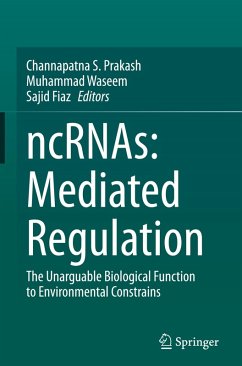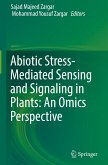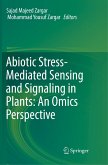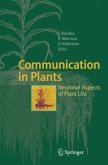Non-coding RNAs (ncRNAs) are a class of RNA molecules that do not encode proteins but play pivotal roles in regulating gene expression and cellular processes. Emerging evidence suggests that ncRNAs have evolved as key regulators in mediating adaptive responses to environmental constraints. By modulating gene expression, ncRNAs enable organisms to fine-tune their physiological and cellular processes to maintain homeostasis under different environmental conditions. Understanding the biological function of ncRNAs in response to environmental stimuli is crucial for unraveling the complex regulatory networks that underlie adaptation and survival. This book explores various types of ncRNAs, including microRNAs (miRNAs), long non-coding RNAs (lncRNAs), and circular RNAs (circRNAs), and their involvement in the modulation of gene expression networks in plants to adapt to changing environmental conditions. Additionally, the book discusses the mechanisms by which ncRNAs interact with their target molecules, such as mRNAs and proteins, to exert regulatory effects.
This information about nRNA response to environmental stresses - acting as regulators of cellular processes and stress-related signaling pathways for improving crop production - are lying unorganized in different articles of journals and edited books. Therefore, it is time demanding to publish a book dealing with these aspects.
The introduction discusses the significance of understanding ncRNA-mediated regulation in the context of adaptation and survival in changing environmental conditions. By providing a comprehensive overview, this sets the stage for the subsequent chapters. Chapters then delve into the role of ncRNAs in epigenetic regulation and transgenerational effects, and explore how ncRNAs participate in shaping the epigenome and influencing heritable gene expression without altering the DNA sequence. This book discusses the implications of ncRNA-mediated epigenetic regulation inadapting to environmental challenges and its potential transgenerational effects. It summarizes key findings and highlights the importance of ncRNA-mediated regulation in responding to environmental constraints, emphasizing the unarguable biological function of ncRNAs and their role as critical regulators in adaptation and survival.
This information about nRNA response to environmental stresses - acting as regulators of cellular processes and stress-related signaling pathways for improving crop production - are lying unorganized in different articles of journals and edited books. Therefore, it is time demanding to publish a book dealing with these aspects.
The introduction discusses the significance of understanding ncRNA-mediated regulation in the context of adaptation and survival in changing environmental conditions. By providing a comprehensive overview, this sets the stage for the subsequent chapters. Chapters then delve into the role of ncRNAs in epigenetic regulation and transgenerational effects, and explore how ncRNAs participate in shaping the epigenome and influencing heritable gene expression without altering the DNA sequence. This book discusses the implications of ncRNA-mediated epigenetic regulation inadapting to environmental challenges and its potential transgenerational effects. It summarizes key findings and highlights the importance of ncRNA-mediated regulation in responding to environmental constraints, emphasizing the unarguable biological function of ncRNAs and their role as critical regulators in adaptation and survival.








